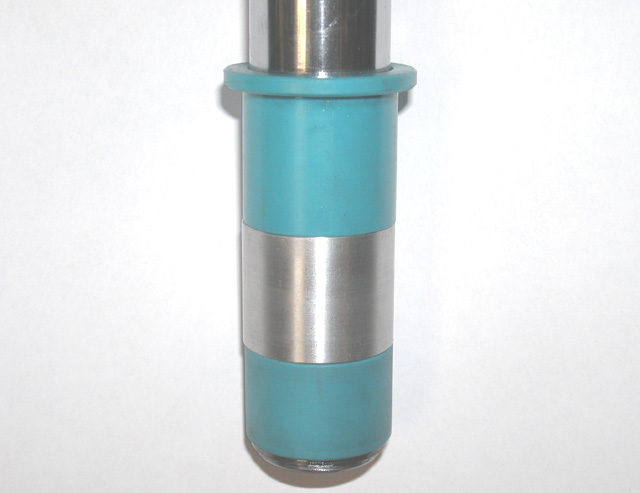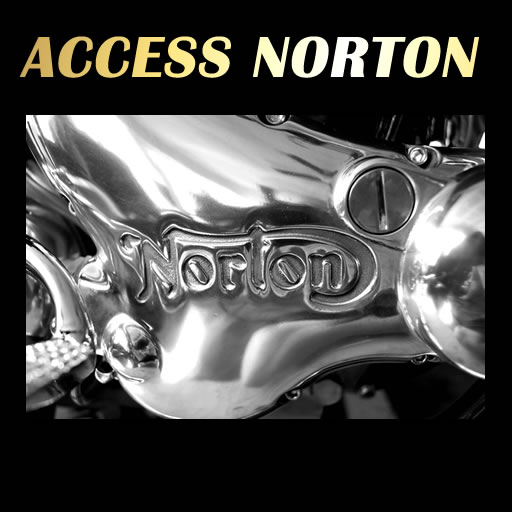robs ss
VIP MEMBER
- Joined
- Aug 16, 2016
- Messages
- 3,713
We are not discussing bump stops!
Neither was I!
Without them you would be bouncing down the road.
You seem a little agitated - maybe you should.
We are not discussing bump stops!
Without them you would be bouncing down the road.
That is incorrect as the Covenant conversion is solely concerned with adding hydraulic bump stops, not to create rebound damping. (Edit as it's compression damping that the forks lack, not rebound)The Covenant conversion's only existence was to create rebound damping - something the Roadholders were bereft of.
Explained well here by Peter Crespin (UK)
Cheers
Norton Owners Club of NSW - Norton Roadholders - The Hole Story by Peter Crespin
Post date: Dec 25, 2011 12:51:16 PMwww.nocnsw.org.au

Back to the start !I am currently using 20w engine oil in my 1973 Mk1 forks, but the ride on some bumpy roads is almost unbearable. Now, will using a heavier weight oil produce a smoother ride or is it the opposite, a lighter weight oil that will produce a smoother ride ?
Will adding more oil than the recommended amount stiffen up the suspension ?
I have new seal kits that I plan to install this winter because as far as I know they have never been changed and they do leak a little.
I weigh 200 pounds if that helps in the oil recommendations. I do occasionally hear clunking from the forks which seems to be on the rebound.
Any help or Ideas would be appreciated.
TIA
As @L.A.B. has pointed out, and I have re-read Peter Crispin's notes, the Covenant conversion does indeed only provide hydraulic bump stops at full compression and extension. My bad!!We are not discussing bump stops! Yes, the standard forks can clunk when over extended. Are you referring to noise damping? None of the rest of us are. The dampers in the forks allow them to compress with little to no resistance and extend with resistance. That's what any shock absorber does. Without them you would be bouncing down the road.
Thank you. I've learnt something new. I am surprised, on my Commando I can keep up with mates on modern retros. All without any real compression damping. What a hero, can't wait to brag!
I've always thought you need both compression and rebound damping, to avoid gradually compressing further and further on more bumpy surfaces (plenty round here). So, was genuinely surprised there's no compression damping to speak of. Guess the springs are strong enough to avoid that, as I have no complaints about how they ride. Not jolt free, but no jitters.
I guess I got caught up in the double whammy of being wrong and matching your bedside manners. (you're not related to a certain DynoDave are you?)
You do need damping both ways IF you want forks that actually function correctly / properly by modern standards.I've always thought you need both compression and rebound damping, to avoid gradually compressing further and further on more bumpy surfaces (plenty round here). So, was genuinely surprised there's no compression damping to speak of. Guess the springs are strong enough to avoid that, as I have no complaints about how they ride. Not jolt free, but no jitters.
Greg,The fork tubes and thereby sliders are probably not perfectly parallel. If you don't have gaiters you can verify with a flat plate - I used this: Amazon product ASIN B07T7ZMGL2
Another way to see if there's a problem is with the springs removed, the bike on a jack and the front wheel off the ground, the wheel must move up and down freely. A slightly twisted (forks not parallel) front end will fail this miserably yet still somewhat function on the road.
Agreed. But only one of the two axi can be measured with that.Greg,
That is a good tool to have.You can get the forks in proper alignment
Mike
So, next time an OP posts and you give a correct and definitive answer you'll find it OK for me to simply say your wrong with absolutely nothing to back me?As @L.A.B. has pointed out, and I have re-read Peter Crispin's notes, the Covenant conversion does indeed only provide hydraulic bump stops at full compression and extension. My bad!!
I made the mod some years ago to my 500 and my recollection was that it improved my virtually non-existent extension damping.
I have installed the Landsdowne inserts in my 650 and it is much, much better again.
I guess I got caught up in the double whammy of being wrong and matching your bedside manners. (you're not related to a certain DynoDave are you?)
Cheers
True, but the other axis is fixed by the top and bottom yokes. When in doubt I measure the distance between the inner edges of the bottom yoke and the distance between the fork bottoms. I've only ever found one wrong and that one could not be made parallel the other way (why I measured). Finally figured out that the bottom yoke was bent.Agreed. But only one of the two axi can be measured with that.
Thanks Marshg246, I will be rebuilding my forks this winter with a seal kit from Andover Norton as they are 50 years old now and have never been rebuilt. I will be checking all the components and replacing as needed. I will use the SAE 30 and give that a try.I use SAE 30 (not 30w). I'm heavier than you. Extra oil is a bad idea. The heavier you are the further the forks compress for a given bump. The oil controls the rebound and has little to nothing to do with compression. So, if you are hitting bottom a lot, you need heavier springs. If you are hitting the top (clunking on rebound) a lot, you need heavier oil (or you have worn-out dampers).
Never owned a set of those forks, but I know this.... If the fork oil was not drained and replaced regularly over the last 50 years, it basically turns into light lapping oil and wears everything out of spec. Don't skimp on parts replacement during the rebuild. Good luck.Thanks everyone for your help.
A quick look at page 90 in the Haynes manual for 68-77 Commandos by Jeff Clew will disabuse one of the notion that there is neither compression nor rebound damping. There is both.


